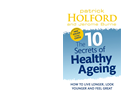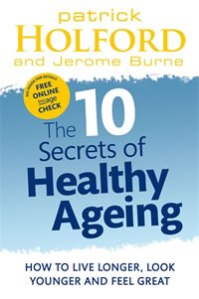Eating an apple a day is as effective (almost) at fending off heart disease as taking a statin. That was the catchy claim of an article in the BMJ last week reported by most of the papers. On the surface it was a light, good news Christmassy tale but dig a little deeper and it looks like contributing to a long term statin marketing strategy as well as raising question marks over the effectiveness and evidence base for our official approach to preventing heart disease.
I’ve written about the lifestyle implications of the apples study in the Daily Mail today – have a look because I want to avoid repeating it as far as possible – but there are a couple of points worth expanding. The equation “apples as good as statins” was based on calculating the effect of a massive increase in statin prescriptions – five million to 15 million. Crucially it assumed that statins are pretty effective, even for people at very low risk, and that they are also pretty safe.
In fact both of these assumptions are highly questionable. Dr John Abramson of Harvard Medical School was head of a team that published a detailed critique of the research the apples paper was based on in the BMJ in October . It’s behind the BMJ paywall but you can read an account of the critique, with some new insights, by Dr John Briffa in a blog on HealthInsightUK.org. Abramson’s team found the risk of developing diabetes from statins was five times greater than the apples paper claimed.
Pushing for yet more statin use
The BMJ apples study assumed that giving statins to everyone over fifty would bring down deaths from vascular disease by around 9000 a year. Interestingly it puts forward the case for this huge expansion of statin prescribing just a few weeks after a similar expansion was recommended by two of the biggest American heart disease societies – Dr Malcom Kendricks reported on this in HealthInsightUK.
Despite the evidence that lowering bar for prescribing is not a good idea, it’s certainly getting traction in some official circles. Two factors to consider: a number of the members of the committee recommending the new American guidelines have links to statin manufacturers. Secondly: there are a number of new drugs in the pipeline (expensive) ready to replace statins that have nearly all come off patent (cheap) making the attraction of a greatly expanded market very clear.
The essential objection to giving statins to many more people at low risk – calculated according to an official formula – is that hundreds have to be given the drugs for just one to benefit. (Last week the American formula was found to be very inaccurate , classifying many people at risk who weren’t. I don’t know about the UK formula). Even though only a few taking the drug avoid a heart attack or similar, the hundreds not benefitting are at equal risk of nasty and possibly dangerous side-effects.
Deaths from the drugs
The result says Abramson, is that while there may be some reduction in the number of heart disease deaths (experts differ on the numbers) there is no evidence that overall death rate changes. Of course we all have to die but statins are supposed to cut the chance of dying from heart disease early. In other words, the damaging effects of the drug causes earlier deaths from a different cause.
All this suggests that the apple-a-day strategy could well be far more effective than even the BMJ paper claims (a fact the authors acknowledge but in a passage buried deep in the body of the paper). After all, if the cut in the death rate has been exaggerated and the risks heavily down-played, statins’ real benefits are going to be a lot smaller.
At this point we need to implement what I called in a recent post the Pump Handle strategy after one of the classics of public health prevention strategies. A Victorian doctor cut local death rates during a London cholera epidemic by simply removing the handle from a pump dispensing contaminated water. It was a dramatic example of the effectiveness of public – as opposed to commercial – interventions. Eventually it led to public works to provide sewers and clean water.
Spend drug money on gym prescriptions
Everyone agrees that eating well and exercising is the best form of prevention but rather than developing a pump handle strategy to help them do it, we spend around 250 million at the moment providing statins. A three-fold increase would bring that up to 750 million a year.
How about spending that on apples, along with prescriptions for serious help with healthier eating and visits to subsidised exercise facilities? Doctors talk about prevention and lifestyle changes but they are actually paid for prescribing statins (via the QOF system) but not for providing apples. They are also paid for weighing people and pronouncing them overweight or obese but not for doing anything about it.
The apple paper has quantified the benefit of just one extra fruit and veg portion – an 8,500 drop in vascular deaths – with no side effects or additional deaths. So what might two or three extra pieces do? What about nuts and omega 3 fish oil also known to cut risk, along with the Mediterranean diet?
This would seem to be the basis for a far more sane, safe and evidence-based, strategy for cutting heart disease. It’s a project that could also very likely have an impact on the incidence of Alzheimer’s as well. Two new projects for a Pump Handle gang.



Leave a reply